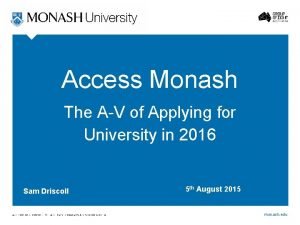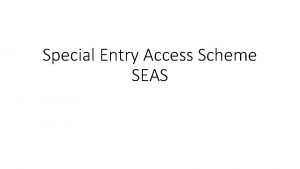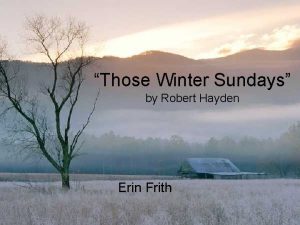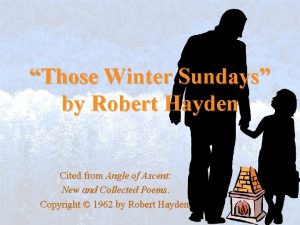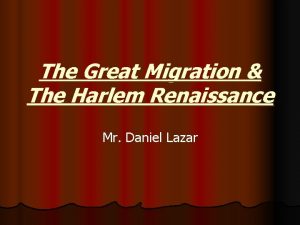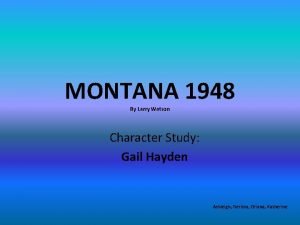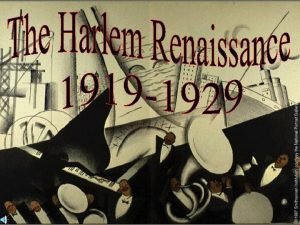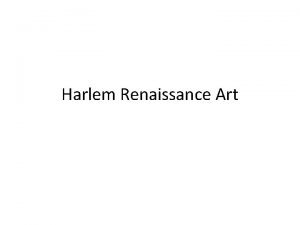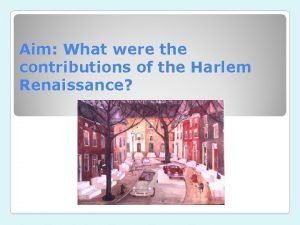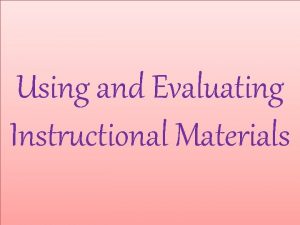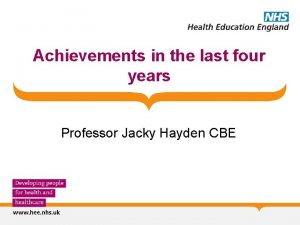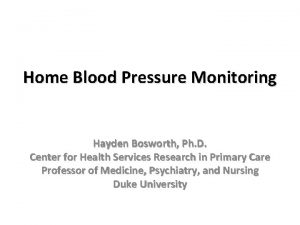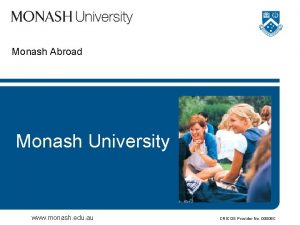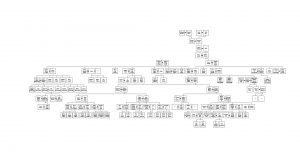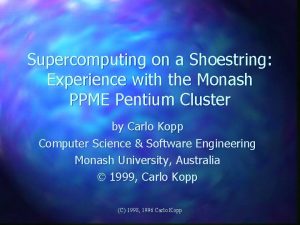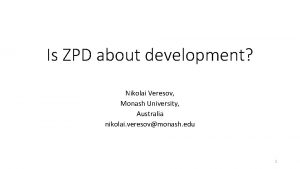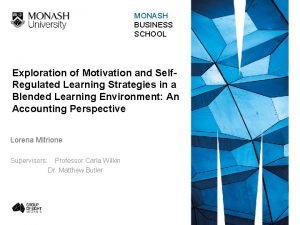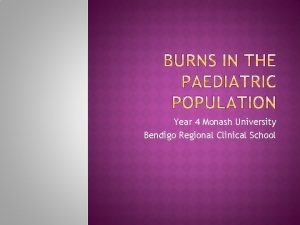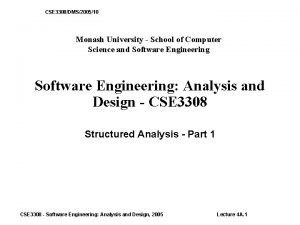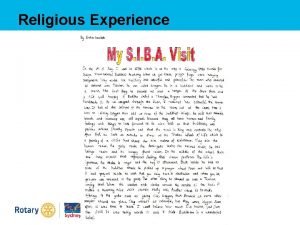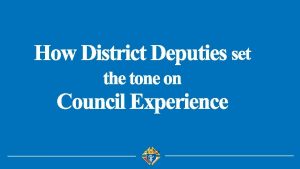SPECIAL SCHOOL EXPERIENCE Monash Special Development School Hayden















- Slides: 15

SPECIAL SCHOOL EXPERIENCE Monash Special Development School Hayden Mc. Lennan 900197239

INTRODUCTION This presentation reflects on how I have dealt with working at Monash Special Development School and how this has impacted on my teaching and knowledge of students with a disability.

PERSONAL AND PROFESSIONAL DEVELOPMENT The following experiences have helped develop my understanding of teaching in special schools and engaged me in my personal and professional development. Thought Process when Developing & Planning Lessons Pedagogy Personal and Professional Development Assumptions about Special Schools Teacher/Studen t Relationships

PEDAGOGY The students that I taught at Monash SDS were of very low functioning and high maintenance. Students with an IQ of 0 -50 were only accepted into the school. I conducted lessons involving parachute games, tennis, hockey, basketball and cross country. The goal for each lesson was to conduct basic drills allowing for a high level of participation for the students. The skills of each student varied from different classes but all students performed to the best of their abilities.

PEDAGOGY Verbal communication was not appropriate for these students so I had to visually show them or hold them throughout an activity just so they could be involved in the drills. I found this to be the most effective way to teach basic instructions allowed for the students to gain a better understanding of the activities. Boud et al (1993), explains that experience is the foundation for learning and there needs to be active engagement with it. In demonstrating an activity I had to show the students where to move and how to successfully complete the drill. Although this was time consuming it did allow for gradual student learning.

TEACHER/STUDENT RELATIONSHIPS • The students at Monash SDS were hard to verbally communicate with so it was important to be able to engage with them in other ways. I found smiling and positive body language to be a great way to communicate with them. This would make them smile and laugh allowing for us concentrate on teaching them rather than focusing on poor behaviour. • Over the 3 weeks I experienced teaching many different disabled students. This made it difficult to remember names at times. Some students were unable to talk or communicate which made it tough when it came to doing activities, while others could talk and understand instructions. This allowed me to gain valuable experience teaching students with different disabilities and learning capabilities. This developed my teaching abilities such as classroom management and engagement as it was difficult at times to keep students focused on the activities.

TEACHER/STUDENT RELATIONSHIPS • To counteract some of these communication issues, I would speak with either our supervising teacher or the classroom teacher to get the students names as well as gaining information on their disabilities. This was helpful as I could then understand what level of communication skills the students had. • By gaining this information it helped me develop a blind student’s throwing and catching skills. At first I did not know their condition so it made it difficult for me to communicate with him to catch the basketball. After gaining information about him I would stand closer to him and speak slowly so he could hear me and feel how close I was to him, which allowed him to complete the activity. • I have learnt that building a teacher/student relationship is important as it allows for the student to gain trust and an understanding of what the teacher wants from the student.

ASSUMPTIONS ABOUT SPECIAL SCHOOLS • I have worked with disability students before through my swim teaching jobs, but none to the severe level that I faced with these students. • This made me think of the struggles that not only these students go through but also the parents and families involved. • Understanding how to teach and deal with these students was a challenging task and made me aware of how much time and effort is put into helping these students learn.

ASSUMPTIONS ABOUT SPECIAL SCHOOLS • Although skills were at a lower level than mainstream schools, the effort and participation levels were very high with many students enjoying their PE experience with some students being able to possibly go onto a mainstream school. • Instructions and demonstrations must be basic and clear to maximise student learning and understanding. • I found that it is important that both teachers and parents who are involved in special schools need to work effectively together to achieve the best outcome for their child. • If you are to work in an SDS school it is important as a teacher that ‘we see the person and not the disability’ (Scope, 2011).

THOUGHT PROCESS WHEN DEVELOPING & PLANNING LESSONS At first it was difficult to conduct and plan for lessons as many of the students had variable disabilities with many finding it hard to understand communication. I wanted to use different activities so I could maximise student engagement and participation. Our supervisor used pictures on a board to communicate with the students, so I used this approach. I showed the flash cards to each student so they could visually see what sport we were doing. I also used hand signals to let the students know when we had finished that sport or the PE lesson was finished. This technique allowed for the students to gain some sort of understanding or what we were doing and slightly improved their communication levels with the PE teacher, myself and the other student teachers.

THOUGHT PROCESS WHEN DEVELOPING & PLANNING LESSONS At first I tried to let the students do the activities by themselves after demonstrating to them. Although this did not go to plan, for most students I had to physically hold them while attempting a drill. An example of this was when we were doing hockey and tennis. For most students I had to hold their hands and hit the balloon or tennis ball with the hockey stick or tennis racket for the first 3 -5 times. After that they completed the drill by themselves and most students managed to do this. After I had helped them do the activity most students were able to complete the basic drill by themselves resulting in some very gradual learning.

REFLECTION ON WHAT I HAVE LEARNED • Teaching in an SDS school was a very challenging experience as I wanted to influence how the students enjoyed their PE classes. This is important to me as while we ‘commonly assume teaching leads to learning, it is the experiences which teaching helps to create that prompt learning’ (Boud, 2001). • I found providing positive and regular feedback to each student decreased the amount of poor bahaviour from some students, as well as developing the students learning of the sport. • According to Boud et al, (1993) experience is the foundation of, and the stimulus for, learning. This has allowed me to understand that I need to build experiences through my teaching that students will remember and use in their lives.

REFLECTION ON WHAT I HAVE LEARNED • The opportunity to teach students from a range of year levels and disabilities was a valuable but difficult experience. • This experience will allow for me to continue to develop as it is important as the teacher that I create sound learning experiences in my classes that the learner can use to develop their understanding of the sport or topic (Boud, 2001). • By having this experience it has definitely allowed me to respect the teachers who can work in a special school as you need to have a high tolerance level and dedication to your profession. • I believe the key to achieving the best for the students is to provide lessons that focus on maximum participation and fun so the students get enjoyment out of the lesson more so than skill development. • Building a positive rapport with the students was great as they were friendly children and always got excited to see us. Although it was challenging at times this made it a very rewarding opportunity.

SUMMARY After successfully completing my teaching rounds at Monash SDS, it has left me with many valuable learning experiences. I intend to use these experiences to improve my teaching abilities in both Physical Education and classroom teaching. Teaching in this special school was challenging and tiring at times although it was a fulfilling and satisfying experience.

REFERENCES Boud, D. J. 2001, Peer Learning in Higher Education: Learning from and with each other, Kogan Page, London. Boud, D. , Cohen, R. & Walker, D. (1993)’ Some propositions about learning from experience’, in Using Experience for Learning, Open University Press, Buckingham UK Scope 2011, ‘For people with a disability’, Scope, retrieved 3 October 2012, http: //www. scopevic. org. au/index. php/site/home
 Mature age student monash
Mature age student monash Seas category 4
Seas category 4 Imprint definition psychology
Imprint definition psychology Continuity vs discontinuity
Continuity vs discontinuity Indirect experience
Indirect experience Those winter days
Those winter days Speaking indifferently to him meaning
Speaking indifferently to him meaning Palmer hayden
Palmer hayden Hayden montgomery
Hayden montgomery Montana 1948 gail
Montana 1948 gail Harlem map 1920s
Harlem map 1920s Harlem renaissance art characteristics
Harlem renaissance art characteristics Jeunesse palmer hayden
Jeunesse palmer hayden Hayden smith and thomas nagel
Hayden smith and thomas nagel Professor jacky hayden
Professor jacky hayden Hayden bosworth
Hayden bosworth
